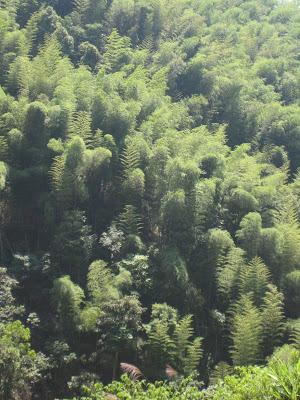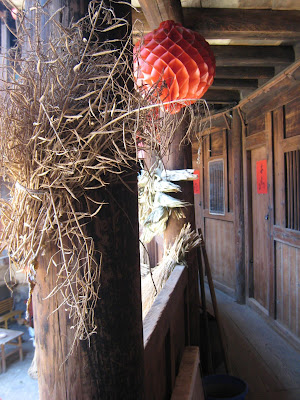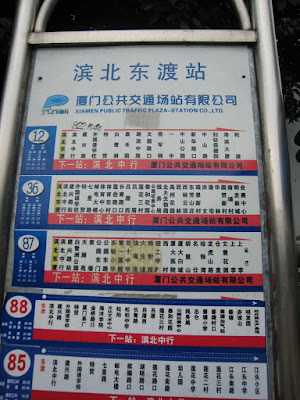There are four tones in Mandarin. Here's a word I learned in my first class - shí. It means ten. We didn't officially learn it in our first class; we officially learned the numbers 1, 5, and 8. But I asked about the other numbers, since I could not truly exercise my bargaining abilities with only 1, 5, or 8 Chinese yuan to choose from.
The little accent mark over the word shí means that it is pronounced with the second tone. Another common word we learned in our second or third class was shì. It is the verb "to be". Actually shì, by itself or with a supporting verb someplace else in the sentence, is used for all conjugations of to be - am, are, is, being, was, were, etc. Sweet! But shì is spoken with the fourth tone. I do have to remember to use the proper tone or a listener might not have a clue what I am trying to say.
And I do have a little problem with the tones. First let me say something about how I think we use tones in English. Nobody taught me this and I have never studied the subject, so this is clearly Diane's-theory-of-how-tones-are-used-in-English.
- The main function of tone is to convey an emotion or attitude. When I'm angry, shocked, bored, light-hearted, or using sarcasm I use different tones. If I wish to convey a sense of superiority, an air of vulnerability, or a feeling that the listener is absolutely right, I will change my intonation accordingly.
- The second most important function of tones in English is to help the listener know whether the speaker is asking a question or making a statement.
- I, personally, also use intonation to make myself clear as I wind my way through long run-on sentences, to distinguish the beginning and end of phrases and clauses.
Calliope taught me how to say the fourth tone by saying the interjection "Darn!" I can see why she says this. When I hear the fourth tone, I think someone is mad. When I say the fourth tone, I feel mad. Yes, I FEEL mad. Even when I say "Darn!", it does not come out as a fourth tone, unless I am actually mad or frustrated. I find it next to impossible to say (and mean) the sentence "I am so happy!" with solid fourth tones. I can do it, but it takes concentration. I have trouble separating the tone from the emotional content. I also have trouble using the fourth tone at the end of a question. In English, our tone goes up to indicate a question, but the fourth tone goes down.
Last week I came up with a new strategy. Whenever I come upon a fourth tone, I put it in my head that I am very angry. Then I say whatever I was going to say. Amazingly, this works like a charm. But it is emotionally draining, because I feel like I am lying. As a result, I rarely use this effective strategy, unless I am desperate.
I have trouble distinguishing between the second tone and the third tone, but even the Chinese have trouble, so I don't worry about it too much. For one thing, the two tones are similar. And for another, many syllables that are normally third tone change their tone based on what tone follows it. Aagh!
Luckily, I can say the first tone easily, when I remember to do so.
Just to round off this post, I looked up both shí and shì in the dictionary. Much to my amazement and depending upon context, shì might also mean yes, right, thing, accident, trouble, responsibility, or job. And shí might also mean hour, time, fashion, opportunity, tense, solid, true, or reality. And I just remembered that the shí in Wanshi Botanical Gardens means stone. Which just goes to show that I probably have no idea what I am saying most of the time.
Don't spread this around, because I don't think I have it exactly right, but the following is a lovely example that a friend pointed out, where Mao is a surname (e.g. Chairman Mao)
The phrase ==> Mao's hat has cat fur
translates to ==> Máo de mào yǒu māo de máo
Add a few meows in there and we have the makings of a great doo-wop song!










































